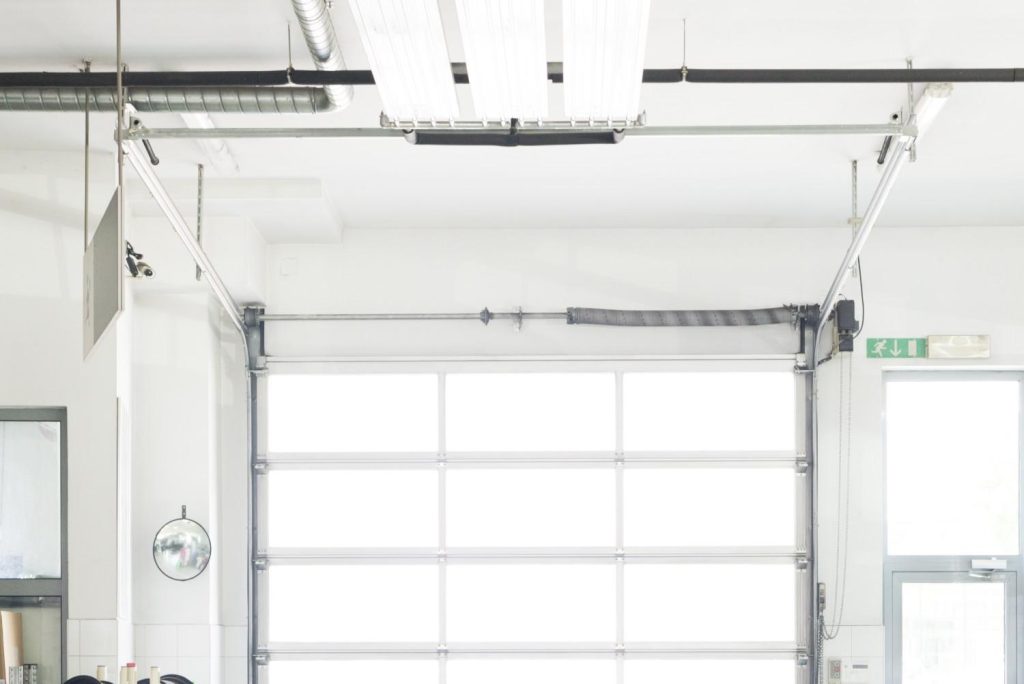You probably haven’t thought much about your garage door springs…until one breaks. You can call a professional, or try to replace the garage door yourself. Just know that this DIY project comes with hazards, especially if you are not that experienced with tasks like this. To help you tackle this problem, our team has compiled the following helpful tips. Read on to learn how to replace your garage door springs yourself!
Understand The Types of Garage Door Springs
Residential garage doors have one or two types of springs – torsion or extension. Heavy-duty torsion springs are mounted around a metal rod that runs parallel to the door. Extension springs are the long, lighter weight springs that run perpendicular to the door above the tracks. Be sure to purchase the right style spring, with the same length and diameter as the old springs.
Replacing Extension Springs
- Remove all spring tension by opening the garage door and clamp it in place. Once in place, disconnect the garage door opener.
- Mark the current placement of the pulley with tape so that it can be reinstalled at the same place.
- Disconnect the spring from the track bracket and the spring pulley. A safety cable is threaded through the spring to hold it in place. Disconnect the safety cable from the bracket and remove the old spring.
- Thread the safety cable through the new spring, attaching the spring to the track bracket.
- Reattach the safety cable and the pulley. Make sure the wire from the pulley is kept away from the safety cable. Use the piece of tape that you attached before removing the pulley to make sure that the pulley is in the correct location.
- Remove the clamps and connect the garage door opener.
- Test the garage door to be sure that the replacement worked. If it doesn’t close all the way, or closes too quickly, inspect the location of the pulley and the extension spring hardware, adjusting as necessary.
Replacing Torsion Springs
- Unplug the opener and clamp the garage door to the track so that the door cannot open when the tension is released on the springs.
- Using a sturdy ladder, climb beside the winding cone at the end of the spring. Insert a winding bar (available on Amazon) into the winding cone to hold the spring in place. Test the force that you will be working with by pushing the winding bar up one quarter turn and then bringing it back down. Once satisfied with the grip on the winding bar, loosen the screw set. Keep one bar in the cone at all times to prevent it from rapidly unwinding and potentially injuring you.
- Lower the winding bar to the top of the garage door, then insert a second winding bar. Remove the first winding bar and lower the second bar to the top of the garage door, then insert the first winding bar into the next hole. Repeat steps 4 and 5 until the spring is completely unwound.
- Loosen and remove the torsion hardware that secures the center stationary torsion cones to the spring bracket.
- Remove the springs, cables, and cable drums.
- For torsion springs, measure the wire size, inside diameter of the spring (most springs have a 2-inch inside diameter), spring length, and determine the winding orientation (whether the spring is left-wound or right-wound).
- Slide the new left spring onto the torsion tube with the stationary cone facing the center bracket, then reinstall the cable drum.
- Install the center bearing and the new right spring and then secure the cones.
- Thread the cables and tighten the drums. Make sure that the tension is equal on both sides to prevent the door from opening unevenly.
- Using the winding bars, begin winding the spring in the opposite direction as it was unwound. Ensure that at least one winding bar is in the winding cone at all times. Wind the spring as many turns as is recommended by the supplier.
- Using a hammer, tap the winding bar to stretch the spring out ¼-inch.
- Tighten the set screws on the winding cone.
- Lubricate the spring with garage door lubricant, then remove the clamp from the garage door.
- Test the spring by lifting the door about 3 feet. If the door remains in place, the replacement was a success. If the door falls, you’ll need to tighten the spring by a quarter turn until it stays open on its own. If the door opens, you’ll need to loosen the spring by a quarter turn until it remains in place.
We hope these tips help! When in doubt, contact a professional at Info@adamsdoorsystems.com!
(Source: Bob Vila)







